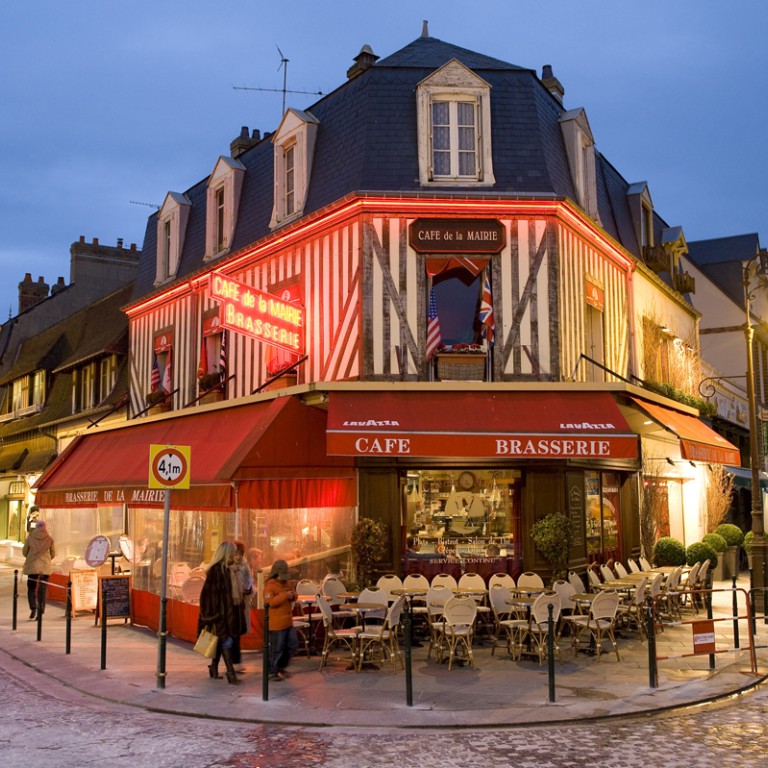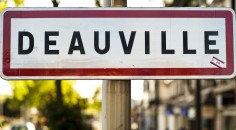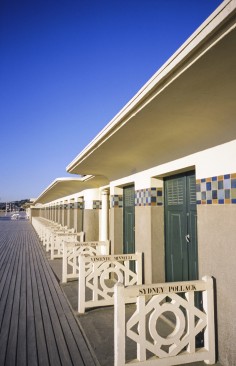
Deauville's advocate
Coco Chanel was among the first to revel in a French seaside town that has been drawing the biggest names for more than a century. Mathew Scott looks for its star attractions

Coco Chanel always seemed to be one step ahead of the game and when the future fashion icon decided on the French seaside town of Deauville as the venue for her first boutique, Parisian eyebrows were, apparently, archly raised.
That was 101 years ago – back in 1913 – as Deauville was starting to establish itself as the pre-eminent coastal playground for the high society of the French capital. A train line finished in the late 1800s had cut travelling time between the two places to about two hours (modern trains have now reduced that to a little over one) but the pieces that would lay the foundations for the town’s future – the sprawling casino, the two racetracks, the hotels and the private villas – were still falling into place.
The story goes that Chanel wanted to make her own way in the world, free from Paris and the men whose cash had set her career in motion, while remaining connected to the people who really mattered – the rich and famous, with their insatiable passion for the latest in fine clothing.

Looking down Deauville’s Rue Gontaut Biron today, Chanel’s decision to begin here still seems inspired. Only a tiny plaque marks the site of that first boutique, but a glance towards the centre of town reveals the standard of fashion house that followed her lead, among them Louis Vuitton, Hermès and Dior. That they share the streetscape with cafes, galleries and patisseries tells you that this is a place in which to consume life at a leisurely pace, far removed from the capital’s clogged pedestrian arteries, and that Deauville remains swathed in style.
The town is permanent home to just over 4,000 people and you can stroll from one end of Deauville to the other in about an hour. Mostly, it seems, people come to Deauville to wander around at leisure.
Chanel used to send her models out in the latest designs onto the wooden promenade on the town’s main beach, to turn heads and lure custom, and the changing booths that line the Promenade des Planches walkway now feature the names of some of history’s brightest stars, everyone from Bette Davis through to our very own Chow Yun-fat, all of whom have visited Deauville for either the American Film Festival, in September, or the Asian Film Festival, in March. Visitors can meander along the waterfront being as wistful as Anouk Aimee, from the Claude Lelouch classic A Man and a Woman (1966), one of many films to have made use of the surroundings.
The Royal Barriere and Royal Normandy hotels combine with the town’s sprawling and majestic Casino Barriere de Deauville to provide a windbreak that keeps the main shopping and cafe district sheltered from the worst of the elements. Sometimes, especially during the winter off-season, a bitterly cold wind blows in from la Manche (as the French call the English Channel), clearing the beachfront of all save for a few hardy souls and, early in the morning, thoroughbreds and their handlers going through their paces along the foreshore, adding mist to the bitter air with their exertions.
Deauville boasts two racetracks, within walking distance of each other, and the sport has a rich history here, dating back to 1863, with locals breeding horses on the stud farms that hug the surrounding hills.

The main races are run in the summer, when Deauville becomes a playground for Europe’s rich and famous; the casino becomes home to a series of professional bridge tournaments; and the polo club hosts some of the most prestigious events on the international calendar, watched over flutes of champagne.
Tribute to the greats of the “game of kings” is paid along the wood-panelled corridors of the Royal Barriere, with photos of winning teams and some of the sport’s more famous devotees, among them a rather young-looking Winston Churchill, girth just beginning to spread impressively as he wields his mallet menacingly atop a rather startledlooking nag.
The opening of the Barriere, the Normandy and the casino coincided with the belle époque, the period of calm and comfort before the first world war.
It’s in these buildings that you’ll still find the stars when they come to town, among them Omar Sharif, the Egyptian lothario who was nominated for an Oscar for his mesmerising turn in Lawrence of Arabia (1962). The 81-year-old actor has been coming each summer for decades and he’s a man who recognises a touch of luxury when he sees it – Sharif has lived continuously in the world’s finest hotels since he was 31.
While the boutiques may be an impressive sight – and a temptation for any Hongkonger open to a little retail seduction – it’s in the backstreets where you’ll find the produce that has spread the name of the Normandy region far and wide. The Place Morny farmers’ market takes over the centre of town each Tuesday and Friday, and it’s here that Camembert, Livarot and Pontl’Evêque cheeses – made by families that have held their secrets tight since the 18th century – are on offer in abundance.

And while it’s almost impossible to resist the lure of a seafood platter at one of Deauville’s beachfront restaurants, the true test of supreme indulgence here is to try all three cheeses at once, set out in steaming-hot, traditional fondue style with slices of locally produced ham, potato, apple and sausage there for the dipping.
If you’re game, you can water down that heady combo with a dash or two of the potent local apple brandy, calvados, which takes its name from the Latin phrase sailors once used for the white cliffs that fringe the Normandy coastline.
The calvados museum at the Pere Magloire distillery, just outside Deauville, charts the history of the fiery cider from the 1500s and offers anecdotal evidence of its many and varied powers, the granting of courage being chief among them. That’s reflected in the tale of local pilot Marcel Lefevre, part of the Normandie-Niemen Regiment, which escaped the fall of France in the second world war to keep up the fight alongside the Russians on the Eastern Front.
Lefevre had the Pere Magloire mascot emblazoned on the side of his Yakovlev fighter plane to inspire him as he flew into battle, fuelled by a few glasses of the strong stuff. Sadly, Lefevre, who would posthumously become a Hero of the Soviet Union, didn’t last the war but you can toast his memory in Deauville before marching into the casino hoping for better luck.
The 2014 Asian Film Festival (www.deauvilleasia.com) runs from March 5 to 9.
